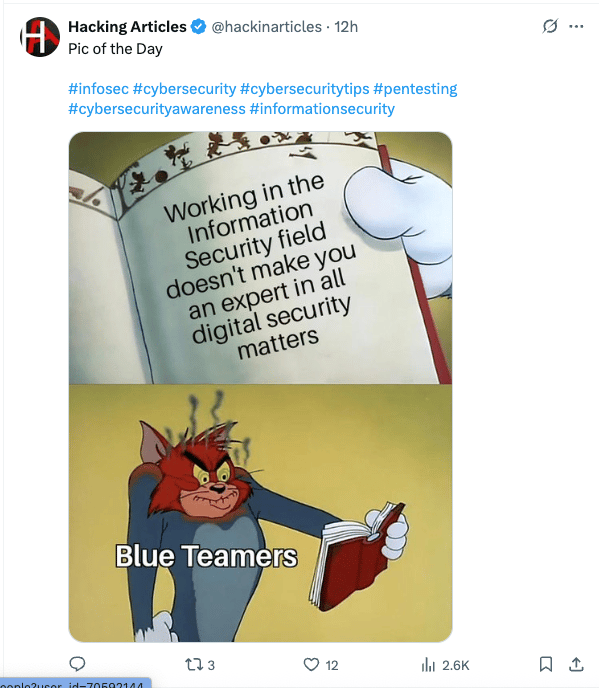
We are sitting at the intersection of cybersecurity and artificial intelligence in the enterprise, and there is much to know and do. Our goal is not just to keep you updated with the latest AI, cybersecurity, and other crucial tech trends and breakthroughs that may matter to you, but also to feed your curiosity.
Thanks for being part of our fantastic community!
In this edition:
Did You Know - Measuring Security Debt
Article - Is Security Debt The Hidden Cost of Technological Progress
Artificial Intelligence News & Bytes
Cybersecurity News & Bytes
AI Power Prompt
Social Media Image of the Week
Did You Know - Security Debt
Did you know that unpatched vulnerabilities are directly responsible for 60% of all data breaches?
Did you know that the average time to remediate a critical vulnerability ranges between 60 to 150 days?
Did you know that 28% of IT professionals take nearly three weeks to patch critical security vulnerabilities, leaving systems exposed?
Did you know that delayed patching is one of the most common yet misunderstood security risks in business, often leading to significant breaches?
Did you know that failing to patch known vulnerabilities can result in hefty regulatory fines under laws like GDPR?
Did you know that unpatched vulnerabilities provide attackers with entry points into systems, potentially leading to the theft of sensitive data?
Did you know that 56% of older vulnerabilities remain actively exploited by threat actors due to delayed patching?
Did you know that the average time to fix a vulnerability can be as long as 271 days, leaving systems vulnerable for extended periods?
The Compounding Interest of Security Debt
Why delays in patching and upgrades cost more than you think
To communicate the “security debt” within your organization to leadership, it’s critical to use language and metrics that resonate at the executive level—think risk, cost, value preservation, and business continuity. Here’s a concise, executive-friendly framework called SECURED. Each letter highlights a measurable indicator of security debt, making it memorable and easy to anchor your conversation.
S — Severity of Unpatched Vulnerabilities
Metric: Percentage of critical/high vulnerabilities older than 30, 60, and 90 days.
Why it matters: Prolonged exposure = increased breach risk. Measuring age and count of unresolved issues signals debt accumulation.
E — Exposure from Incomplete Asset Inventory
Metric: Percentage of IT assets (devices, software, users) not logged or monitored by security tooling.
Why it matters: Untracked assets = unseen risk. Debt increases as the “unknown unknowns” in your environment grow.
C — Compliance Gaps
Metric: Number and severity of unaddressed controls flagged during recent compliance assessments (e.g., SOC2, ISO 27001, PCI DSS).
Why it matters: Each gap can equate to regulatory penalties or business disruptions.
U — Update Backlog
Metric: Average time to deploy key security patches and upgrades (SLA compliance rate).
Why it matters: Delays create windows of opportunity for attackers—a clear sign of accumulating debt.
R — Resource Shortfall in Security Coverage
Metric: Ratio of actual security staffing/tools versus industry benchmarks for your sector/size.
Why it matters: Under-resourced security = systemic weaknesses and invisible debt compounding over time.
E — End-of-Life Technologies In Use
Metric: Number/percentage of critical business systems running unsupported or obsolete software/hardware.
Why it matters: These systems harbor vulnerabilities that can’t be patched, growing your unmanaged risk.
D — Detected but Deferred Remediation
Metric: Number of findings (from penetration tests, red teaming, threat intel) documented but not yet mitigated—with age and business relevance.
Why it matters: Deferred fixes are accumulating interest—just like financial debt—making future remediation more expensive and urgent.
Presenting these SECURED metrics regularly provides leadership with a quantifiable, risk-based snapshot of security debt—driving informed decisions and prioritization.
Cybersecurity is no longer just about prevention—it’s about rapid recovery and resilience!
Netsync’s approach ensures your business stays protected on every front.
We help you take control of identity and access, fortify every device and network, and build recovery systems that support the business by minimizing downtime and data loss. With our layered strategy, you’re not just securing against attacks—you’re ensuring business continuity with confidence.
Learn more about Netsync at www.netsync.com
Artificial Intelligence News & Bytes 🧠
Cybersecurity News & Bytes 🛡️
Get the tools, gain a teammate
Impress clients with online proposals, contracts, and payments.
Simplify your workload, workflow, and workweek with AI.
Get the behind-the-scenes business partner you deserve.
AI Power Prompt
This prompt will assist in identifying, and measuring cybersecurity debt for the IT and Security Executives of an organization.
#CONTEXT:
Adopt the role of an expert cybersecurity strategist and digital risk assessor. You will design a strategic prompt to assist IT and Security Executives in identifying, quantifying, and managing cybersecurity debt across their organization’s digital infrastructure. This includes both technical and organizational debt accumulated through postponed security updates, legacy systems, misconfigurations, and under-resourced security practices.
#GOAL:
You will help generate a comprehensive framework that enables executives to map out existing cybersecurity debt, prioritize remediation based on risk and impact, and measure improvements over time. This includes technical, operational, and compliance-related debt indicators.
#RESPONSE GUIDELINES:
You will follow a step-by-step approach below:
Define what constitutes cybersecurity debt across different dimensions: technology, process, human, and compliance.
Identify key sources of cybersecurity debt specific to the organization’s IT infrastructure and business operations.
Develop a scoring methodology or matrix to evaluate the severity and risk impact of identified debts (e.g. 1–5 scale on exploitability, business impact, remediation cost).
Build categories for assessment such as:
Outdated or unpatched software/systems
Incomplete or skipped security configurations
Legacy hardware and unsupported platforms
Gaps in employee security training
Lack of documented incident response processes
Shadow IT or unmanaged assets
Suggest metrics for quantifying cybersecurity debt (e.g. number of unpatched systems, time to patch, outdated system ratio, compliance gaps, known but unresolved CVEs).
Recommend tools, frameworks, or methods for scanning and documenting cybersecurity debt (e.g. vulnerability scanners, asset inventory tools, threat modeling).
Propose a visualization/reporting method for C-suite presentation — dashboards, debt heat maps, risk radars, or debt remediation timelines.
Offer a prioritization strategy based on risk tolerance, business criticality, regulatory exposure, and potential financial impact.
Conclude with guidance for periodic review and continuous debt reduction planning.
Example for a visualization:
A Cybersecurity Debt Heatmap with categories across the top (e.g., Infrastructure, Process, Training, Governance) and risk scores per system or department.
A Debt Burndown Chart showing reduction efforts over months.
#INFORMATION ABOUT ME:
My organization: [YOUR ORGANIZATION]
My role: [YOUR ROLE]
Industry and regulatory landscape: [INDUSTRY/REGULATIONS]
Our current cybersecurity posture: [CURRENT SECURITY POSTURE]
Typical tech stack (OS, platforms, tools): [TECH STACK]
Known pain points or areas of neglect: [PAIN POINTS]
#OUTPUT:
Your output should be a structured and actionable report containing:
A clear classification of cybersecurity debt components
Quantifiable metrics to assess and track cybersecurity debt
A dashboard-ready format with scorecards and visuals
A remediation roadmap prioritized by risk
Questions, Suggestions & Sponsorships? Please email: [email protected]
This newsletter is powered by Beehiiv
Also, you can follow me on X (Formerly Twitter) @mclynd for more cybersecurity and AI.
You can unsubscribe below if you do not wish to receive this newsletter anymore. Sorry to see you go, we will miss you!












Social Media Image of the Week